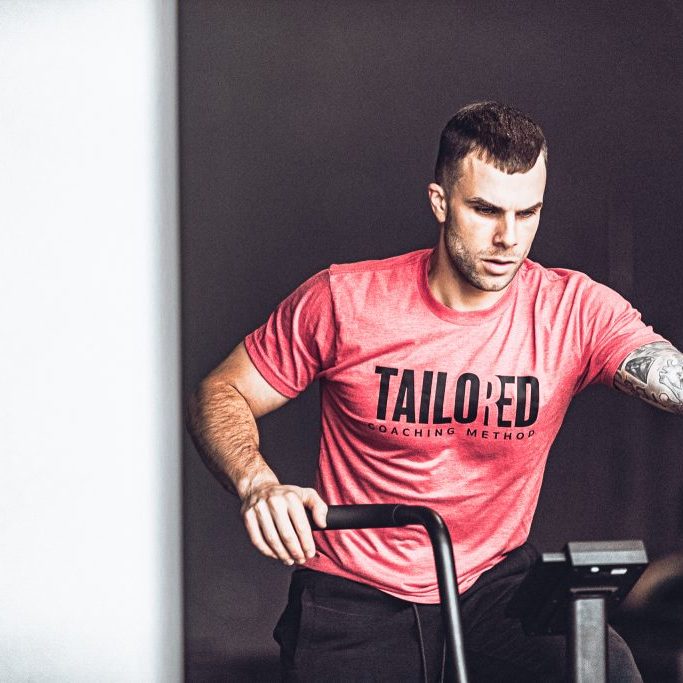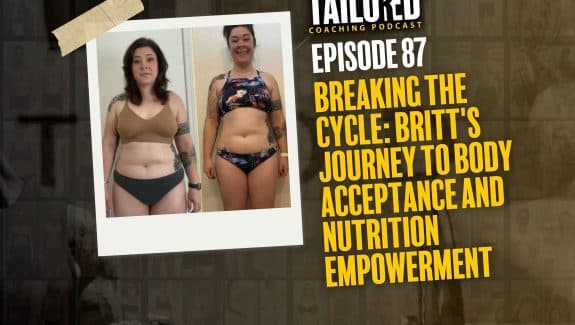Cardio For Fat Loss
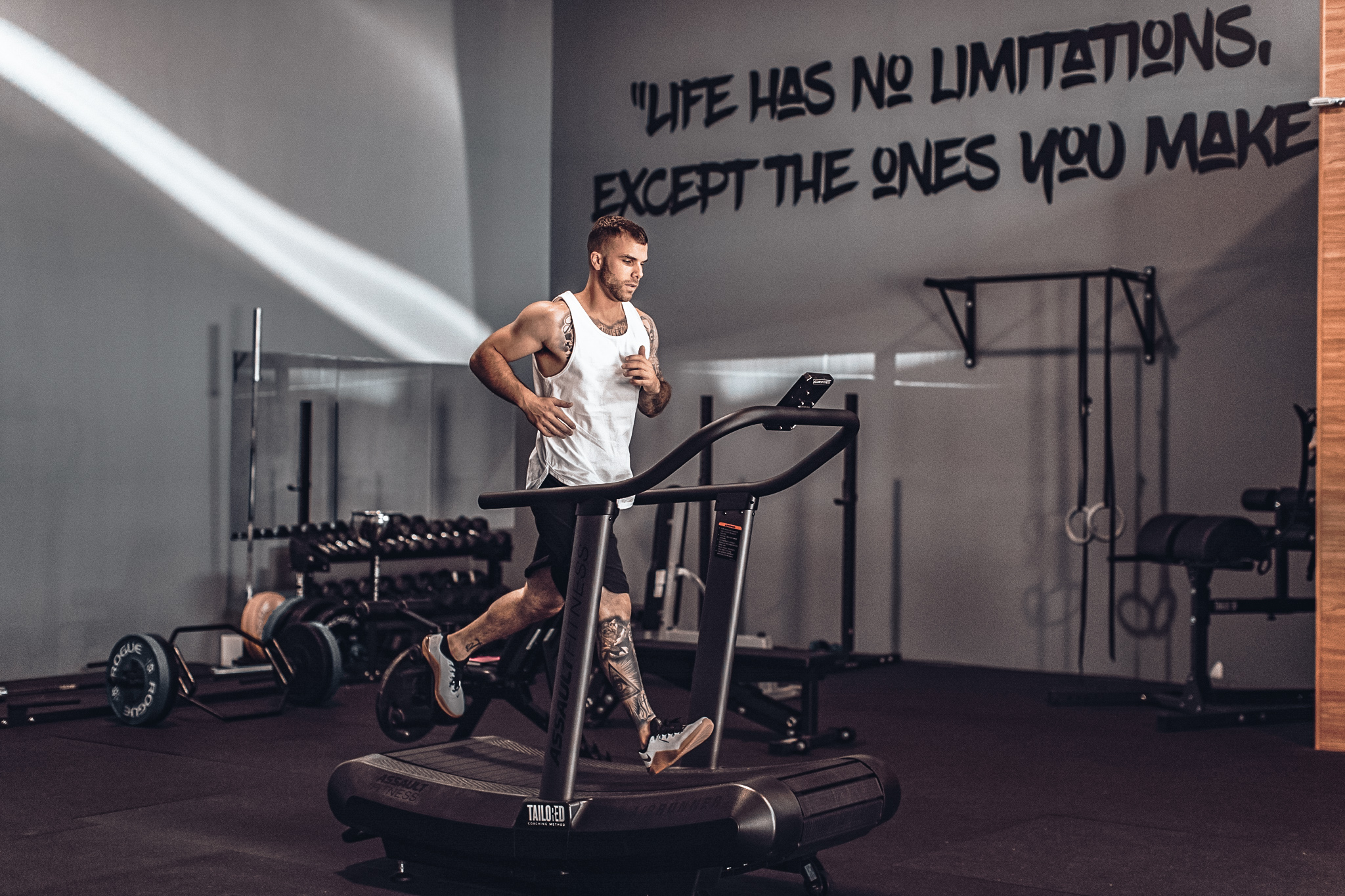
This article is more than likely the most in-depth AND practically applicable article you’ll fine online, in terms of using cardio for fat loss. Cardio for fat loss is a very commonly discussed, debated, and asked about topic inside the coaching industry… But the vast majority of what’s talked about is just anecdotal opinions, rather than researched-backed claims.
The problem with this isn’t that anecdote is incorrect or not as valuable, because coaching experience is still evidence! And being “evidence based” actually means that you’re using your own coaching experience (anecdote), in combination with the scientific literature. There’s also a lot inside coaching that cannot be totally justified by scientific research, because how you program training or cardio for fat loss, as well as dietary protocols, sometimes will never be fully explained or discovered inside a research study. Whether that be because the population inside the study is different or because the methods can’t be controlled perfectly (or the lab just can’t get the funds to do the study to begin with).
All this to say that what you’re going to get in this article is everything I know about cardio for fat loss, which is a combination my own coaching experience, over the last 13+ years, and the research to support what I’ve learned in that timeline.
You’ll learn about what cardio is, the different types of cardio to use for fat loss (NEAT, HIIT, and LISS), what results you might expect to see, the downfalls of implementing cardio for fat loss, and so much more…
But before we dig in, I also want to mention that you can listen to this article via The Tailored Life Podcast as well:
Or Listen on Spotify, iTunes, and anywhere else podcasts are available!
When To Use Cardio For Fat Loss
Cardio is going to be implementing into your individual plan when 1 of the following 3 things is desired:
- General Health Improvements
- Fat Loss and Body Composition Changes
- Performance Improvements For Sport
Now, the context of this guide is very specific to fat loss and body composition changes – because that’s what we specialize in at Tailored Coaching Method. Not to say that we don’t help people with the other categories, to… because we absolutely do! But for the sake of creating specific content, for specific people, and keeping the length of this guide digestible for you… We’re going to stick with fat loss.
Just know that cardio and aerobic exercise as a whole is going to improve a lot of things in regards to your health. From immune strength and function to cardiovascular health to blood flow and disease prevention. It does wonders.
Now, in regards to sports performance – it’s very individualized, as you can imagine. Because the aerobic fitness demands of a NFL lineman greatly differ from that of a UFC fighter. They both need general fitness capabilities, but the degree at which their aerobic capacity varies is vastly different.
Which leaves us to the main topic at hand, fat loss, and the main question to begin with, which is WHEN should YOU use cardio, to enhance fat loss?
The easiest way to answer this question would be to say that;
You should implement cardio as a way to increase calorie expenditure, in order to create a greater calorie deficit and therefore enhance further fat loss, when you need to supplement your already sound fat loss nutrition plan.
This is also a fancy way of saying, “when you no longer feel like dropping calories from your diet, add some cardio into the mix.”
See, on paper a calorie deficit is a calorie deficit – meaning regardless of how that calorie deficit is achieved, it’s going to do ONE thing… Cause weight loss.
So to an extent, we could say that how you go about choosing the way you create a calorie deficit for fat loss is totally up to you. You would essentially want to look at your schedule, your current diet, and the type of resistance training you’re doing. Then you could more accurately determine what is the better route to take from both a physiological perspective, as well as simply being able to adhere to the plan (i.e. – would you be more consistent with a calorie deficit from dropping calories out of the diet or doing more cardio?).
Choosing Cardio Over Dietary Restriction To Achieve Fat Loss
As you will soon find out, there’s really not much justification for choosing to create a calorie deficit via cardio over dietary restriction. This is because the adaptive nature of cardio may be greater than that of dietary restriction, but also because it’s far more accurate to determine your calorie deficit via dietary restriction than it is via cardio.
But let’s examine these caveats a bit more closely…
First, we have the fact that your body adapts to cardio fairly easily. It does this by lowering expenditure elsewhere in your TDEE (Total Daily Energy Expenditure). We’ll save this, because we’re going to tackle this more heavily in the NEAT section of this guide. But the point here is simple, it might be more effective to pull calories out of the diet.
Second is the accuracy of the calorie deficit via cardio vs. dietary restriction. This might even be the main reason why a calorie deficit via dietary restriction is actually more effective. If we look at the research on calorie tracking apps, wearable devices, or even those on cardio machines – they’re all consistently inaccurate to what’s really being burned. This is because they’re based on estimated questions, such as your age + weight + gender + etc… But also because that’s an assumption of a static position, whereas your metabolism is very dynamic.
In other words, these equations cannot take into account the metabolic adaptations that occur throughout the course of a diet. For example; person A steps on the cardio machine and it’s day 1 of the diet, while person B steps on the cardio machine and it’s day 60 of the diet. Both are the same age, weight, height, and gender… Will they burn the same amount of calories?
Absolutely not! Because they’re at different points in their fat loss timelines, as well as their hormones, lifestyles, stressors, muscle tissue, and so much more, ALL being different.
This presents a huge disadvantage to using cardio as your main source of energy expenditure and creating a calorie deficit, because if you eat 500 less calories… You eat 500 less calories! And it’s far easier for us to guarantee that mode of measurements.
Now, we also have a couple reasons why cardio might be a good way to increase energy expenditure and create your calories deficit. The first one being to help with preserving muscle tissue. We know that nutrients coming in are what build and preserve muscle tissue, so the more we take out the harder that becomes. We also know that resistance training stimulates MPS (Muscle Protein Synthesis), which also helps to preserve muscle tissue (as well as neurological strength, and the only way to keep training hard is to have enough energy to do so.
So in this regard, keeping as many calories in the diet as possible while still losing fat is a very beneficial focus to have.
The next reason would be totally based on adherence, which is highly individual. Which is why our cardio recommendations, for our own members at Tailored Coaching Method, during fat loss phases vary greatly from person to person. But we are more likely to prescribe cardio into the fat loss plan if we know that they are more likely to adhere to a few cardio sessions than they are to pulling the calories down another 300+ calories per day.
So how should YOU choose…? Well, you have to make the best decision based on the variables presented so far OR simply hire a coach to walk you through it personally.
N.E.A.T. (Non-Exercise-Activity-Thermogensis) For Fat Loss
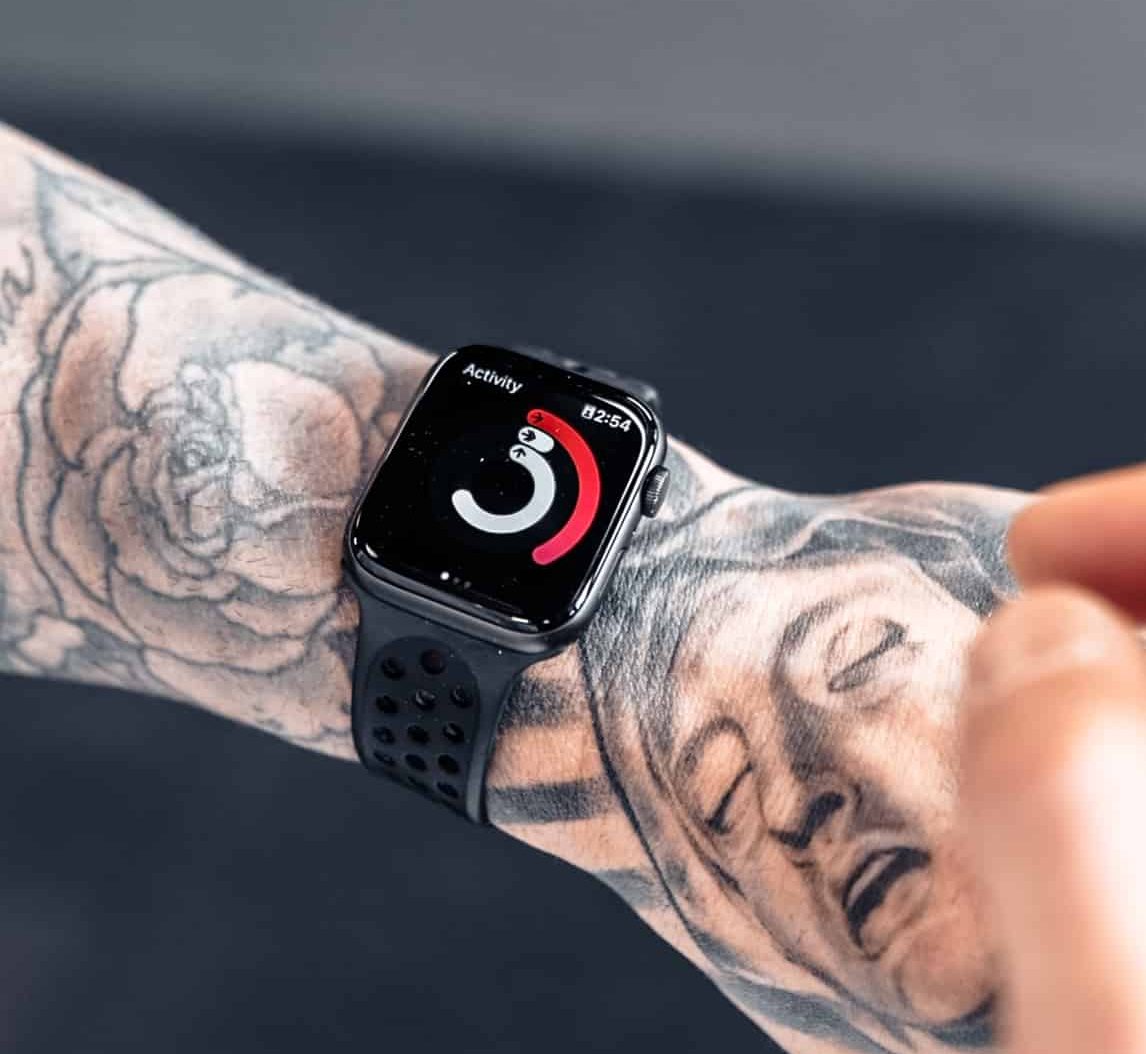
N.E.A.T. is an acronym for Non-Exercise-Activity-Thermogenesis. This is essentially everything we do, on a daily basis, that burns calories and/or contributes to our Total Daily Energy Expenditure (TDEE). In fact, NEAT is one of the largest contributors to our TDEE – taking up 6-10% of TDEE in sedentary individuals and up to 50% in active individuals.
The great thing about this is that it can be somewhat intuitive or subconscious, which means if we simply move more, we burn more. This may be the reason as to why some individuals actually tend to get leaner when they increase calories; i.e. in a reverse diet.
Many people have talked about “stoking the metabolic fire” or claimed that an individual is “not losing body fat because they’re in starvation mode”, both of which have been disproven in the literature. What is likely happening in these scenarios, where one believes they’re defying the laws of thermodynamics by eating more and burning more (contrary to the scientifically proven model of calories in vs out), is that they’re actually abiding by the law of thermodynamics perfectly without realizing it! By eating more, they have more energy and that energy goes to work by causing them to talk more, stand more, walk more, and even blink or fidget more, daily. These all add up to more activity and therefore more calories burned, taking them into a deficit. This is also known as Energy Flux, which we have written about as well.
But again, this is all great because it can be a very easy and somewhat subconscious way to get leaner and promote better health. However, there’s limitations to this of course…
First being that if we intentionally increase our step count to increase NEAT, we’re being INTENTIONAL rather than INTUITIVE. So is it really NEAT at that point? Not likely. But hey, if you want to walk more and burn more – that’s still a great strategy for fat loss!
Second limitation is that there might actually be diminishing returns with your total daily step count. This theoretical limit is known as the constrained energy theory. This theory was developed by Dr. Herman Pontzer and suggests that the body adapts to increased physical activity by reducing energy spent on other physiological activity, maintaining total energy expenditure within a narrow range.
Another theory, known as the additive total energy expenditure model, suggests that total energy expenditure is a linear function of total physical activity, and variation in physical activity energy expenditure determines variation in total energy expenditure.
What these theories tell us is that if we increase our energy expenditure through our step count beyond a certain point, our NEAT will drop elsewhere. This also suggest that the same will happen if we increase our energy expenditure through cardio methods, such as biking or running.
The take home point with these studies and theories is simple – if you increase your energy expenditure beyond what your body’s comfortable with, it will decrease it elsewhere… leaving you at a fat loss standstill.
Third and final limitation with this is that just like adding cardio can lower your NEAT without much of your control, so can your diet. Meaning, if you lower your calories beyond your body’s comfort level, which is often not only necessary – but likely mandatory to reach your ultimate fat loss goals, your body will lower energy expenditure via NEAT or EAT (Exercise Activity Thermogenesis) because you simply do not have the energy to get it done.
At the end of the day, the body is an adaptive machine and will do everything in its power to slow you down and conserve it’s energy for survival!
Adjusting N.E.A.T. (Step Count) For Fat Loss
Ok, so at this point… NEAT sucks, right? Doesn’t seem very helpful, knowing our body will do so much just to adapt and shut progress made from it down.
Well… Not exactly, because it’s actually still the best tool we have!
See, I mentioned multiple times that your body starts adapting and slowing you down “beyond a certain point”… which tells us that up until that point, we’re likely going to see positive adaptations from increasing our steps.
In fact, I typically avoid going beyond 15,000 steps with any client chasing fat loss for these exact reasons. Research supports the range of 12-15,000 steps per day as a solid range for both health AND body composition adaptations to occur. Beyond this point, the adaptive nature of your body starts to take over more rapidly.
To be more specific, one study showed these ranges for positive health adaptation:
– Risk of all-cause mortality was 40% lower at 5,801 steps/day, 45% lower at 7,842 steps/day, and 53% lower at 10,901 steps/day. The lowest risk was observed at 7,000–9,000 steps/day.
– In adults younger than 60, the lowest risk for all-cause mortality was observed at 8,000–10,000 steps/day — with no additional benefit above this level of activity.
– For adults 60 and older, the lowest risk of all-cause mortality was observed at 6,000–8,000 steps/day.
This tells us that in regards to health, more is better… until it’s not. You can see how it got better and better, but they also concluded that beyond the greater range improvements stopped occurring.
Now, what about fat loss? Because that’s what I’m really writing this ultimate cardio guide for anyway.
With regards to cardio for fat loss, specifically NEAT for fat loss, we see just about the same thing – however, it tends to be a little bit higher.
Research shows increased calorie expenditure, up until a certain point at which the body over compensates by lowering physiological processes or physical activity elsewhere, as a way to conserve energy. Very similar to what we see with RED-S (Relative-Energy-Deficiency in Sport).
Which brings me back to my original recommendation of 15,000 steps per day, which is where we see a drop off in calorie expenditure.
My concluding recommendation here is to increase steps as a means of increasing calorie expenditure, for fat loss, up until you reach the 15,000 step mark. Once you reach this point, you will begin to see a drop off elsewhere and that’s not going to be productive for your progress.
Now, does this mean you shouldn’t try to burn ANY extra calories beyond this point…?
Not necessarily. But what it does mean is that you need to be very specific with how you go about it and how you track the activity you’re doing, in order to burn those calories.
This is where you’ll begin to implement one of, or both of, the next two cardio modalities we’ll cover in this guide – HIIT and LISS cardio. But when doing so, it’s important to not track your steps associated with these modalities! Meaning track your STEPS, but once you jump on the treadmill to run sprints… DON’T track the steps accumulated during the HIIT session; especially once you’re maxing out your step count.
The reason for this is because of the adaptive nature of your body, which we just covered in massive detail. Knowing it will drop elsewhere, it’s better to psychologically separate the two and try our best to track as much of NEAT as we can (since we can’t actually track calories burned from things like blinking or talking).
Ok, so we know that we should increase until reaching 15k steps per day, at most, if our goal is to progress fat loss via NEAT (instead of dropping calories or adding HIIT or LISS). But how much do we increase by? I would suggest anywhere between 10-20%. Anything less will be too easy for your body to adapt to and won’t show any meaningful differences in your fat loss journey.
SUMMARY ON NEAT:
- Your body adapts, so track as much as you can.
- Sweet spots for health tend to range from 5,000-10,000 steps per day.
- Your body will burn less calories elsewhere once you reach a high amount, usually around 15,000 steps being the upper cap for people.
- You can increase up until that point, by 10-20% per adjustment.
- These adjustments should be separated by at least a week, if not 2-3.
- At that point, if you still want to do more cardio, you would add a formal form of cardio (which we’ll cover next) and it shouldn’t be tracked towards your daily step count.
LISS Cardio For Fat Loss
LISS stands for Low Intensity Steady State Exercise. This is the most typical type of cardio you’ll see performed and has been the most common type of exercise for the general population for decades now. It’s any type of “aerobic fitness”, essentially, and it’s highly beneficial for our health – immune function, cardiovascular, etc….
It’s also great because it’s a very effective fat loss tool, as fat is the primary fuel source for lower intensity exercise, AND it’s easy to recover from (compared to resistance training or HIIT cardio). This is why you see many physique athletes choosing to walk for an hour on an incline treadmill or the stair stepper, instead of doing HIIT bootcamps or circuits. It makes a lot more sense to implement LISS as a way to just burn calories, while keeping recovery in a good spot so that you have the physical capability to keep hitting it hard in the gym (lifting weights).
Implementing LISS Cardio Protocols
There are COUNTLESS LISS protocols you can use, because it’s less about what you do and more about how you do it. For example, you can use a treadmill to sprint or jog or walk… That’s a high, moderate, and low intensity exercise modality.
You can use the bike, rower, elliptical, or any other cardio machine in the same fashion. In fact, one popular way of performing aerobic exercise recently has been called “mixed modal aerobic fitness” and this is a way of doing functional exercises, like push ups and sled drags, at a slower pace. Doing this is another way of doing LISS cardio, because you’re still keeping your heart rate zone down, which is the key.
So the main protocols are going to be primarily focused on the following aspects:
— Time (30-60 Minutes)
— HR Zone (50-65% of Max HR)
The next thing to touch on is WHEN to do this type of cardio.
The best time to perform LISS cardio is going to be at a completely separate time to your resistance training, putting them roughly 4-6 hours apart, OR directly after your session (although at another time has been shown in research to be more productive for muscle tissue growth/maintenance and recovery). Doing so directly before is not recommended, as it can lower your performance in the resistance training session that follows.
Research done on weight loss via cardio shows us that total weight loss will likely be in the range of 20-50%, on average, of expected weight loss when implementing cardio for fat loss without an energy restricted diet accompanying this process.
This wide range is primarily due to the compensatory increases in energy intake, and also reductions in non-exercise energy expenditure, as discussed before. In other words, your body will adapt to any type of exercise activity based on calorie expenditure performed at higher levels. However, this is highly individual – which is why we may see 20% or we may see 50% of the weight loss expected on paper to actually happen in real life application.
So this leads us to the obvious question of; How much is too much?
Well, that’s a highly individual answer… but for the sake of fat loss, the answer is a bit more simple than that of an athlete or any individual chasing a separate goal.
Here’s the best strategy for LISS, when using it as an added tool:
– Perform LISS cardio separately to your resistance training
– Add it in, after NEAT (step count) is close to or completely capped out.
– Use modalities that are easy to recover from neurologically, physiologically, and physically.
– Keep your cardio in the 30-60 minute range, as any less might not be very productive for serious fat loss and anything beyond 60 becomes too taxing.
– Avoid going beyond 4 sessions per week, unless your goal is that of a bodybuilding competition.
– Keep your HR in the 50-65% range, which can also be found by subtracting your age from 202 (I’m 30, so example is 220 – 30 = 190, which is the higher end of my aerobic zone).
HIIT Cardio For Fat Loss
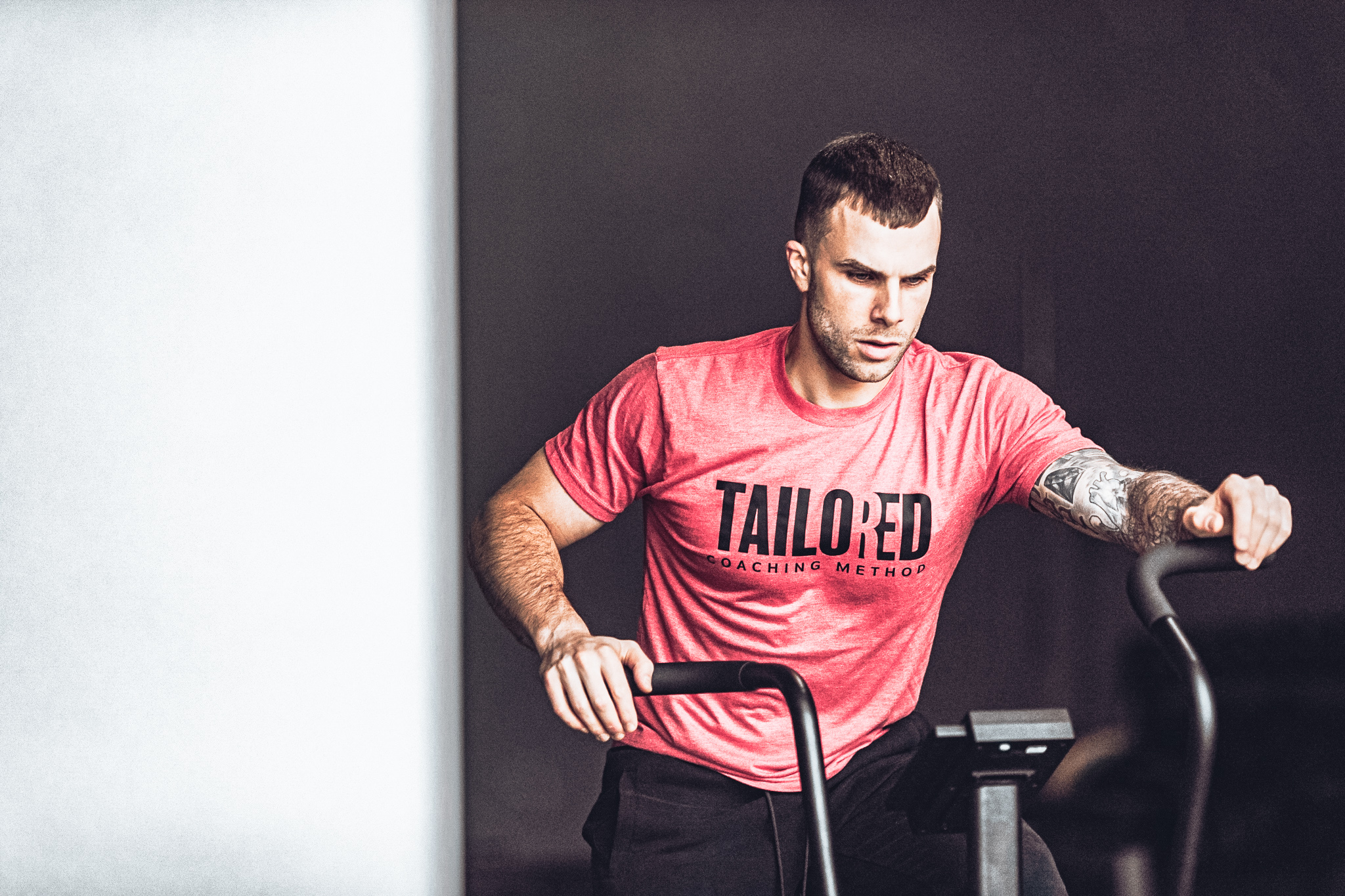
And last but not least, we move into HIIT (High Intensity Interval Training) Cardio! Which tends to be the sexy approach that everyone leans towards at first. I believe this is because of two main factors; one being that it seems better than it really might be and one being that when research came out on this, it got extremely hyped up for some reasons that weren’t actually studied enough to be totally accurate.
But before we say that it’s not great, let’s go over why it might actually be an awesome modality for you to use:
First, it saves a ton of time compared to traditional LISS cardio.
Second, it’s something that can also promote anaerobic improvements – which is extremely beneficial to the average person who is not an athlete. However, if someone IS an athlete or even just a lifter who resistance trains, that might not be the case since we are utilizing the same energy systems on a heavy lifting session as we would in a HIIT cardio session.
Third, it was thought that it could preserve muscle better – however we do not know that this is the case anymore, as more and more research has shown just how difficult it really is to see muscle atrophy when consuming enough protein or resistance training on a semi-regular basis.
Now, what about why it’s NOT the best route to take…?
The first reason you might not want to use HIIT cardio is because it doesn’t train another energy system. When we do true HIIT, we’re primarily using the anaerobic energy system. The problem with this isn’t that this is a bad adaptation, in fact it’s great! But when we strength train, that’s what we’re doing already.
Think of a heavy squat session, where you perform sets of 8 reps… You do 8 heavy squats, rest a few minutes, and repeat for 4-5 rounds. Stress the body, heart rate cranks up, you rest until ready to perform at a high intensity again, and then you repeat it. Sounds just like HIIT cardio, right? Bingo.
Aerobic exercise is LISS and there is a LONG list of health benefits to this, as well as the theoretical idea of utilizing different energy substrates. So you will potentially increase your health, by adding in LISS instead of simply doing more HIIT – but also, you may utilize fat more as fuel because you’re using different energy systems and therefore different energy substrates (energy stores).
The second reason is because it’s way more stressful than LISS cardio or simply increasing your NEAT would be. You’re already strength training a lot, which is taxing on your body… Why stress the system more? You will have more neurological and physical fatigue by adding in HIIT then you would LISS and when you’re dieting for fat loss, fatigue accumulation is far more likely to happen as is. This is why it might not be as smart to implement HIIT, because it might just set you back from a recovery perspective and hurt you in the long run.
This is also the exact reason I almost solely use HIIT cardio in the beginning of my clients’ fat loss journeys, rather than half-way through or as a final tool to pull out when we’re needing to break through and reach the goal. If you’re getting towards the tail end of a cut and are almost there, your recovery will not be at its best and it will only make the fat loss process harder if you add in HIIT cardio.
Implementing HIIT Cardio Protocols
As far as protocols, much similar to LISS cardio you can use just about anything to get the job done.
Sprint, sled, bike, KB swings, circuits…
The key is in the intensity, which tends to mean we need to use a specific set of intervals in order to accomplish that level of intensity in a repeatable manner. Here are just a few:
– 10 Seconds On / 50 Seconds Off
– 15 Seconds On / 45 Seconds Off
– 20 Seconds On / 40 Seconds Off
– 30 Seconds On / 60 Seconds Off
– 60 Seconds On / 120 Seconds Off
You would repeat these bouts for anywhere from 8 minutes in total, up to 30 minutes in total.
The key with HIIT is to keep it brief, so it’s rarely beneficial to perform these on the longer end of the interval OR sets perspective. Which is why 60 seconds is the highest end and is really only justified by a few studies, which do show more benefit from a calorie expenditure perspective – but they also show shifts from anaerobic to aerobic energy system utilization, which makes you question… Is it really HIIT at that point?
So when should we actually be implementing HIIT Cardio? Well, the recommendations here are almost identical to that of LISS cardio.
The best time to perform HIIT cardio is going to be at a completely separate time to your resistance training, putting them roughly 4-6 hours apart, OR directly after your session. Now, although both options are viable, doing HIIT cardio at another time has been shown in research to be more productive for muscle tissue growth/maintenance and fat loss, because your output of the cardio will be greater – which is important for HIIT cardio. Doing so directly before is not recommended, as it can lower your performance in the resistance training session that follows.
And all of this leads us right back to the same obvious question as before; How much is too much?
Again, it’s a pretty individual answer… but for the sake of fat loss, the answer primarily boils down to 3 factors:
- How much do you really NEED to do to reach your goal? Don’t do any more than that. The minimal effective dose is best.
- How much can you handle? Once recovery takes a hit (no pun intended), switch it for LISS or lower the amount being done on a weekly basis.
- Is it still working? Knowing the adaptive nature of the body, you may reach a point of diminishing returns. So if you add more and your body comp results do not improve, pull back.
Here’s the best strategy for HIIT Cardio, when using it as an added tool for fat loss (very similar to LISS):
– Perform HIIT cardio separately to your resistance training
– Add it in, after NEAT (step count) is close to or completely capped out.
– Use modalities that are easy to recover from neurologically, physiologically, and physically.
– Keep your cardio in the 10-30 minute range, as any less might not be very productive for serious fat loss and anything beyond 30 becomes too taxing.
– Avoid going beyond 4 sessions per week, unless your goal is that of a bodybuilding competition.
– Keep your HR in the 80-95% range, which can easily be accomplished by simply going as hard as you can.
– Most importantly, use this when recovery is at its best. This tends to be at the beginning of a cut, rather than at the end when you’re using your final tools to get to your end goal.
Putting it All Together — Creating Your Cardio Fat Loss Plan
The truth is, there’s no perfect answer for you here! Because the cardio fat loss plan for YOU is completely individual, to YOU. Which means that you could use one of these and nothing else, you could use a combination of 2 or all 3, or you could even strictly focus on diet for fat loss! The best plan is going to be created based on how your body responds and adapts, as well as what you personally would adhere to the best over the term of your fat loss journey.
This is exactly why we coach people around the world, helping them achieve the physiques they desire. Because we can provide the answers, while laying out an individualized blueprint that not only works for their body — but it fits their lifestyle and personal needs.
My best overall suggestions, in regards to creating YOUR own fat loss cardio plan, though – would be the following:
– Track your steps and prioritize N.E.A.T. as your first formal form of increasing energy expenditure, before adding any cardio into your plan.
– The same applies to your diet, as you should be creating a deficit from dietary restriction before even thinking about adding in any type of cardio.
– When you get to a point that you need to break a plateau and adding cardio makes sense, as a means to increase the calorie deficit you’re in, add the least amount of cardio you possibly can. This will likely be 2-3 sessions; which is enough to make a noticeable difference, but not so much that your fatigue rapidly increases.
– Add in a combination of HIIT and LISS at the beginning, preferentially HIIT if you have to only choose one. This is because you have more energy and soon enough, your energy reserves will decrease from the diet/fat loss progress you’re making and HIIT cardio will be too difficult to recover from. This doesn’t mean you NEED to do so, either. If you prefer LISS, do LISS! But if there was ever a time to put HIIT in, it’s at the beginning of your dieting/fat loss phase.
– Perform your cardio separately to your resistance training as often as you can and when that’s not possible, add it in post-workout (never pre-workout).
– Use modalities that are easy to recover from neurologically, physiologically, and physically. Walking, biking, sled work, etc… Things that have minimal, if any, eccentric loading on the joints.
– Keep your cardio in the 30-60 minute range for LISS, as any less might not be very productive for serious fat loss and anything beyond 60 becomes too taxing.
– Keep your cardio in the 10-30 minute range for HIIT, as any less might not be very productive for serious fat loss and anything beyond 30 becomes too taxing.
And of course, if you feel like this is too much to figure out on your own OR you’re simply tired of trying to figure it out on your own… Click here, learn more about what we do to help individuals just like you, and apply for a free coaching call to see if coaching with Tailored Coaching Method is right for you!
RESOURCES:
https://www.massmember.com/products/mass-subscription/categories/2148202210/posts/2150070964
https://www.massmember.com/products/mass-subscription/categories/2152086611/posts/2164967043
https://www.massmember.com/products/mass-subscription/categories/422251/posts/1371630
https://examine.com/summaries/study/dbnPPd/

